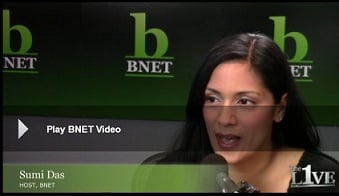Guest blog article written by Lynda McDaniel, Founder and Director of the Association for Creative Business Writing
 Last week, I read an amusing essay in the New York Times about the increasingly popular use of exclamation points in business writing, especially e-mail and texts. BE—before e-mail—any serious writer wouldn’t consider using them unless the comments were truly, well, exclamatory: “I never!” or “Goodness gracious!”
Last week, I read an amusing essay in the New York Times about the increasingly popular use of exclamation points in business writing, especially e-mail and texts. BE—before e-mail—any serious writer wouldn’t consider using them unless the comments were truly, well, exclamatory: “I never!” or “Goodness gracious!”
But AE—after e-mail—we’ve naturally gravitated toward using this happy-looking slash + period. I say naturally because after you’ve received your first 1,000 e-mails (which, sadly, can take less than a week), you can’t help but sense the cold, flatness of the medium. It drains the life out of the most animated prose. Back in writing school, they teach that if you need to use exclamation points, you probably need to rewrite and make your copy livelier. But these days, that's a tough sell when e-mail will cast a wet blanket over your best efforts.
And, frankly, who’s got that much time? Today, my students balk at proper grammar and punctuation; I can’t imagine suggesting that they take the time to make each word s-i-n-g. In an ideal world, that would be grand. In our real world, one or two exclamation points seem to work just fine. (Emphasis on "one or two." More on that in a minute.)
Reluctantly, as though they were confessing to a dark secret, several famous authors cited in the essay shared their predilection for exclamation points. Some did suggest restraint, however, and that’s what I teach as well. “More than one or two in an e-mail,” I often say, “and your e-mail looks more like a teenager’s diary than a business document. It won’t be taken seriously.”
The essay also quotes the co-author of one of the best books on the subject, Send: Why People Email So Badly and How to Do It Better, by David Shipley and Will Schwalbe. “The exclamation point is the quickest and easiest way to kick things up a notch,” Schwalbe says, “but not if you’re angry. Only happy exclamation points.”
Good point!
Additional Resources
The Successfully Starting Your Writing Project Workshop: 9/14 (11:30 am to 1:00 pm Pacific Time)
The Business Writing for Success Workshop: 9/16 and 9/23 (11:30 am to 1:00 pm Pacific Time)


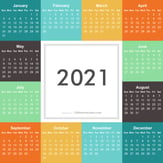
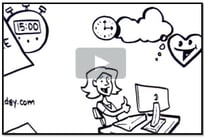



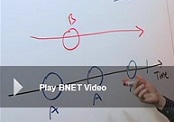
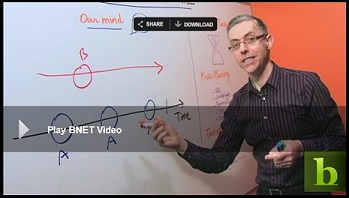

 Can you list your top 5 strengths easily if someone asked you? Being able to acknowledge your top strengths is very helpful during different phases of your career path.
Can you list your top 5 strengths easily if someone asked you? Being able to acknowledge your top strengths is very helpful during different phases of your career path. “I prefer strawberry,” the little girl said, as I tried to hand her pomegranate juice. Such a simple statement but I was struck with how easily she knew her preference and expressed it. It often seemed like I spent thirty years trying to figure out what was acceptable to want, with the end result being that I had no idea what I really wanted. If I didn’t like what others did, I either tried to force myself to go along with it, convince the others why what I wanted was better or analyze what was wrong with me for having different preferences.
“I prefer strawberry,” the little girl said, as I tried to hand her pomegranate juice. Such a simple statement but I was struck with how easily she knew her preference and expressed it. It often seemed like I spent thirty years trying to figure out what was acceptable to want, with the end result being that I had no idea what I really wanted. If I didn’t like what others did, I either tried to force myself to go along with it, convince the others why what I wanted was better or analyze what was wrong with me for having different preferences.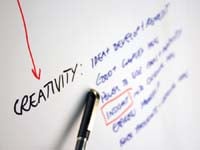 Lately, I’ve talked to several people who told me that creative business writing isn’t really practical. Somehow the word creative makes them think it’s silly or frilly or not really useful.
Lately, I’ve talked to several people who told me that creative business writing isn’t really practical. Somehow the word creative makes them think it’s silly or frilly or not really useful.
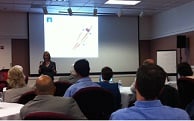 I mentioned to you a few weeks ago that I attended a presentation by Christine Heckart, CMO of NetApp, in which she shared some valuable insights, ranging from high level concepts to practical advice on how to lead, manage, and get results. I also talked about one of her insights which was
I mentioned to you a few weeks ago that I attended a presentation by Christine Heckart, CMO of NetApp, in which she shared some valuable insights, ranging from high level concepts to practical advice on how to lead, manage, and get results. I also talked about one of her insights which was  Barry Cardoza's presentation
Barry Cardoza's presentation Barry Cardoza, Certified Business Continuity Professional (CBCP), and Principal of Barry Cardoza LLC, specializes in Business Continuity Program Development, Enhancement and Analytics. Barry has over 40 years of experience in business management, business process analysis, and continuous process improvement. This experience has been within many different industries and includes over 20 years within the banking industry. Previously responsible for Union Bank’s Business Continuity strategy, policy, compliance, and program implementation.
Barry Cardoza, Certified Business Continuity Professional (CBCP), and Principal of Barry Cardoza LLC, specializes in Business Continuity Program Development, Enhancement and Analytics. Barry has over 40 years of experience in business management, business process analysis, and continuous process improvement. This experience has been within many different industries and includes over 20 years within the banking industry. Previously responsible for Union Bank’s Business Continuity strategy, policy, compliance, and program implementation.